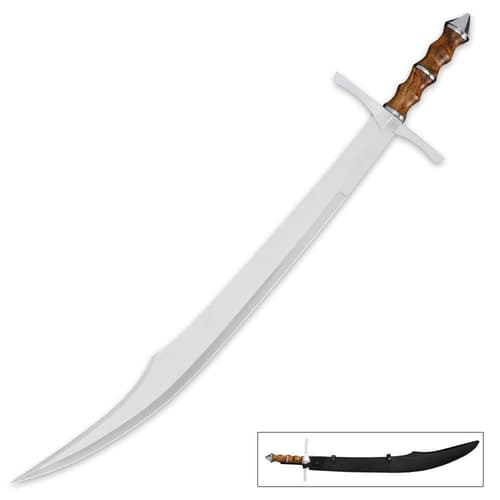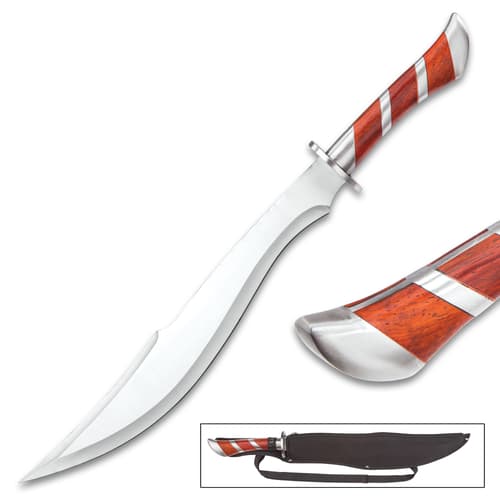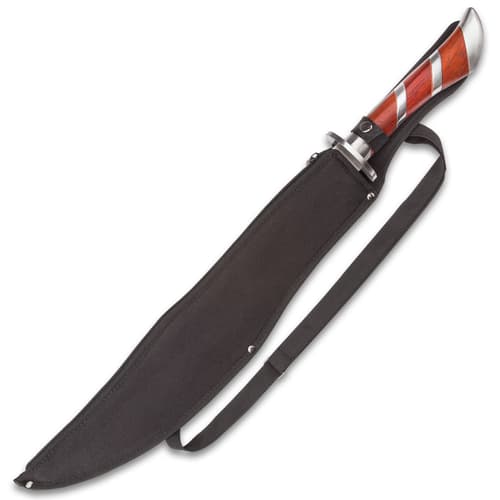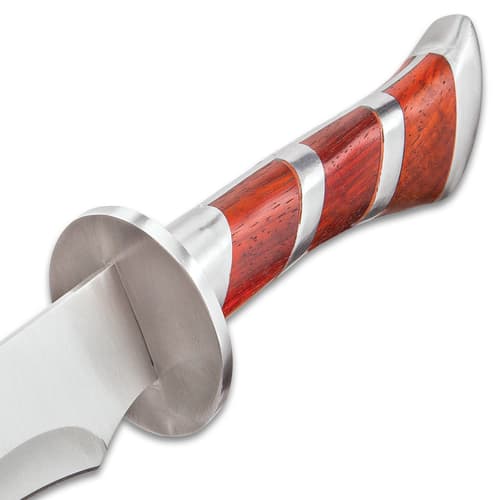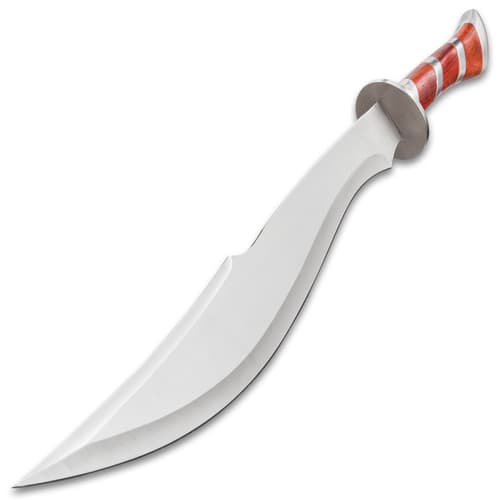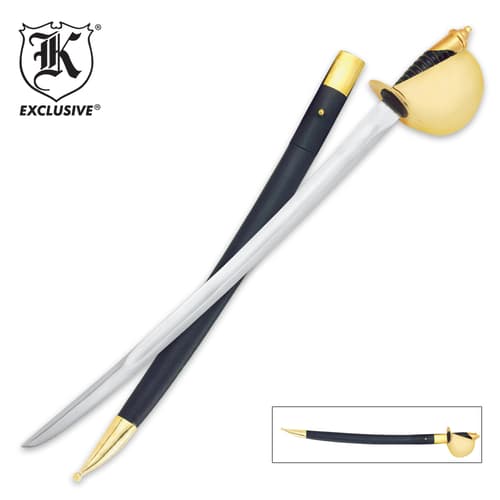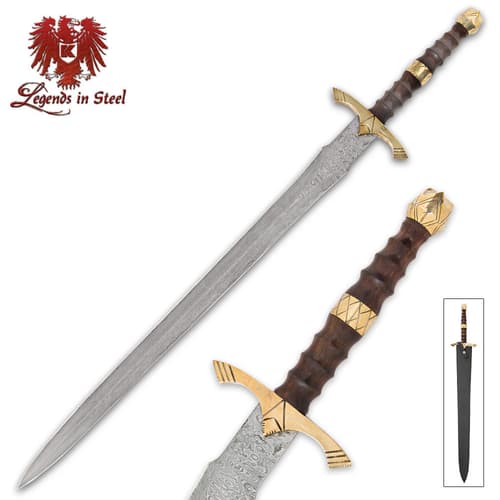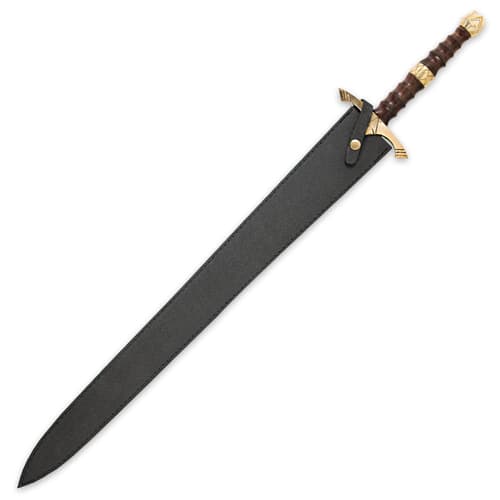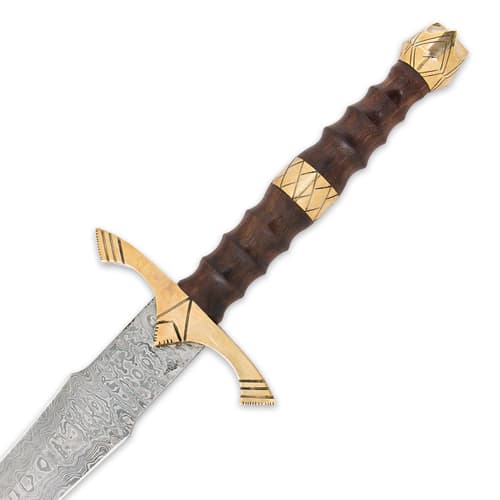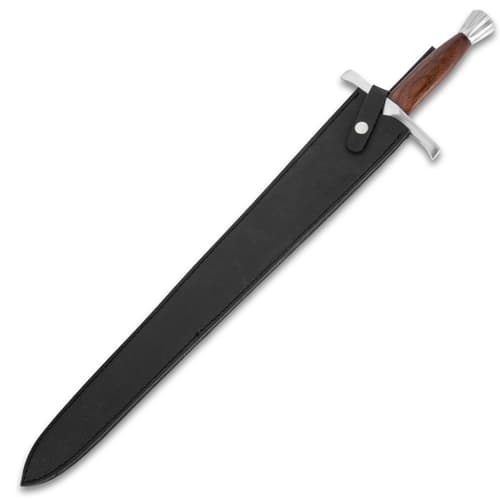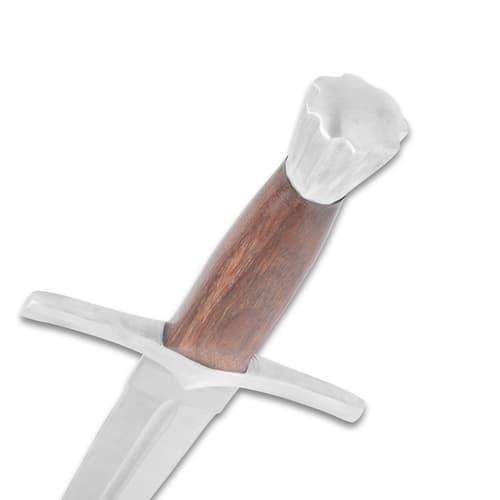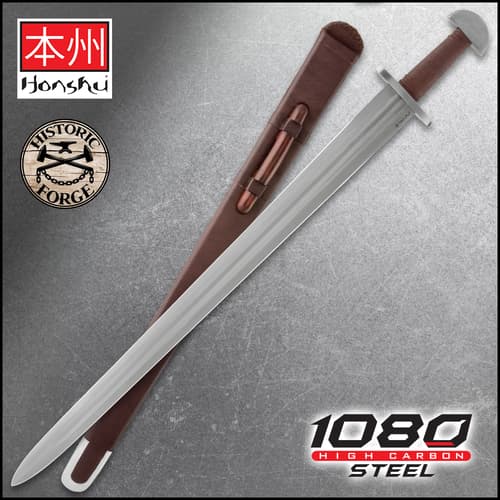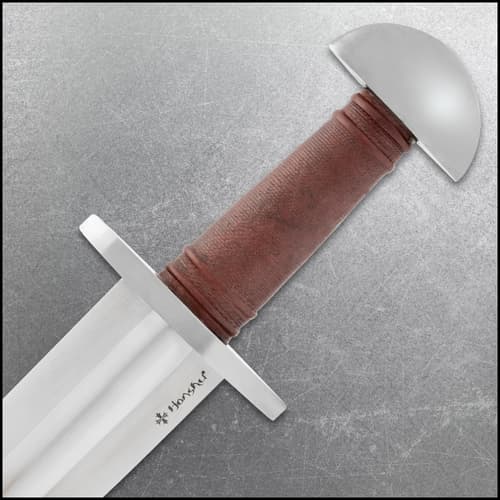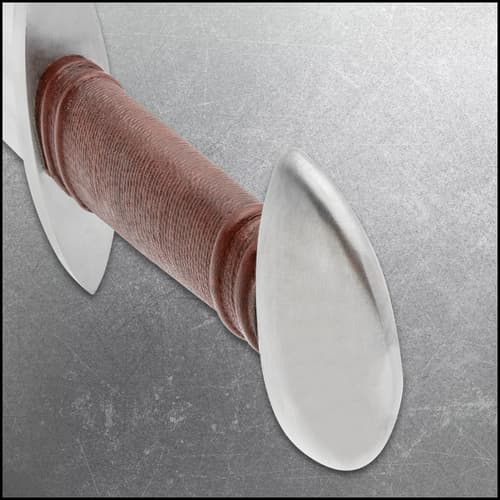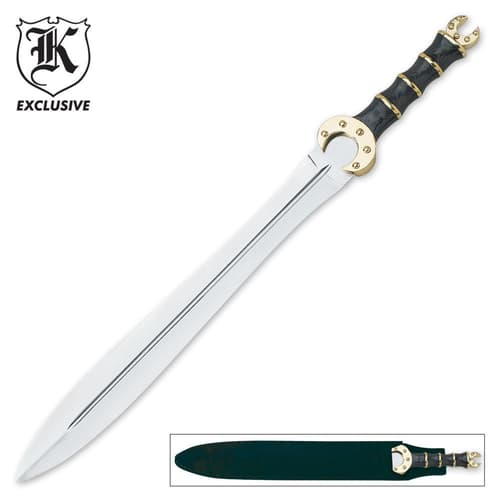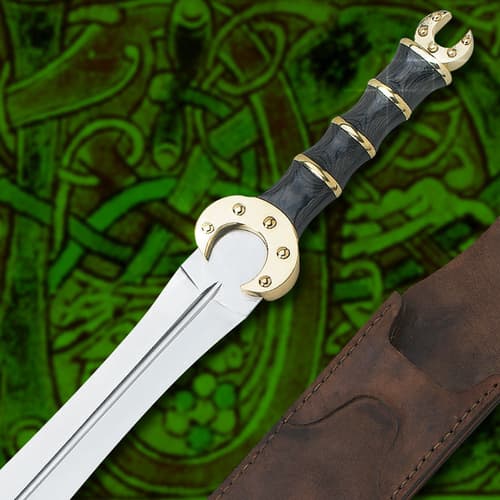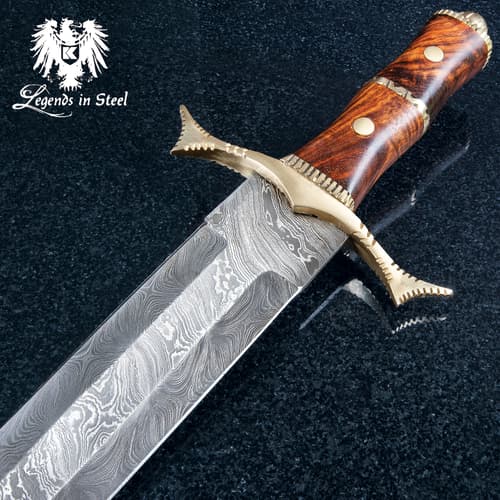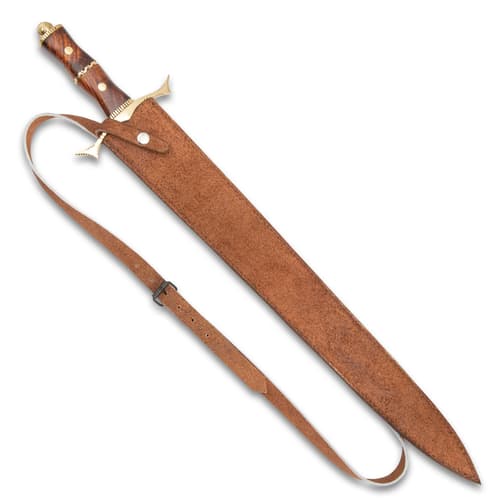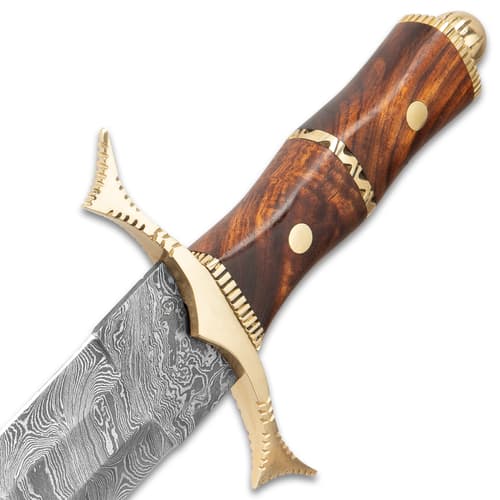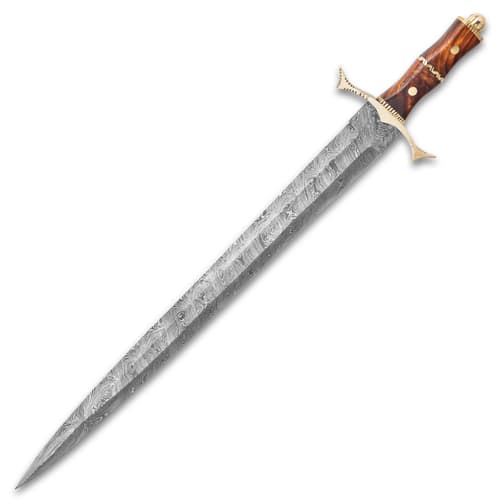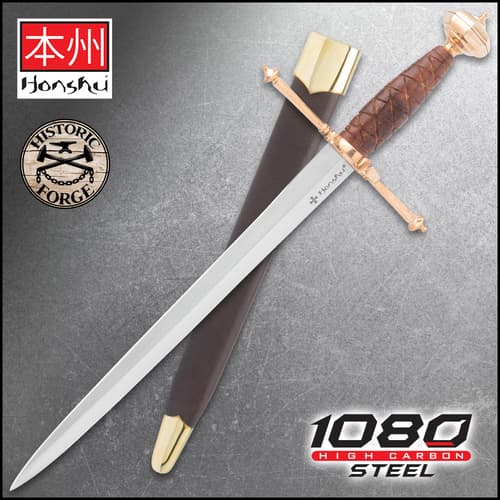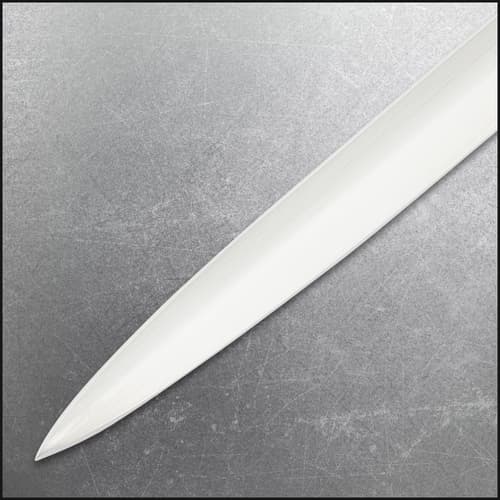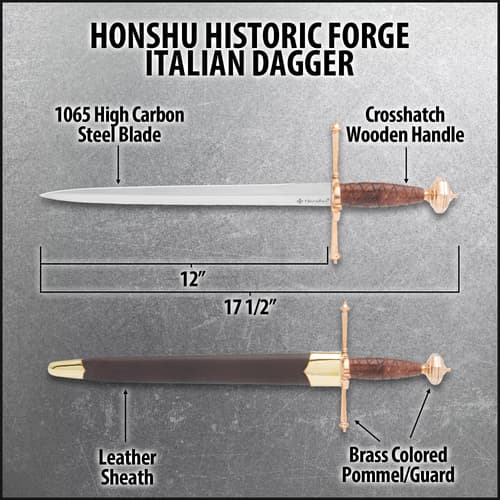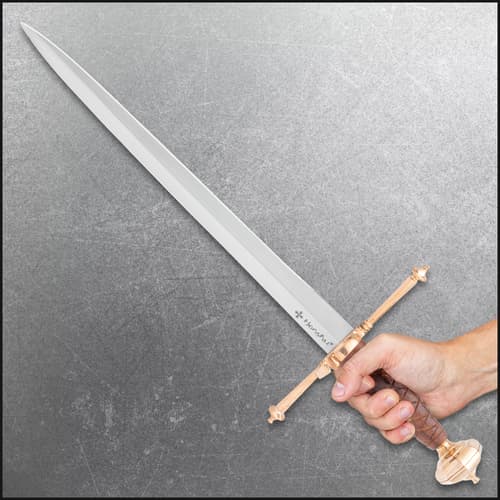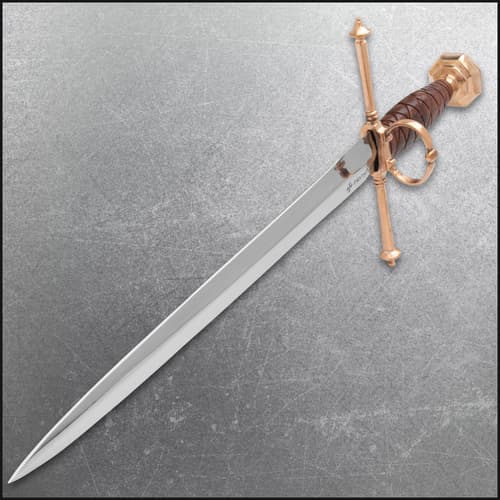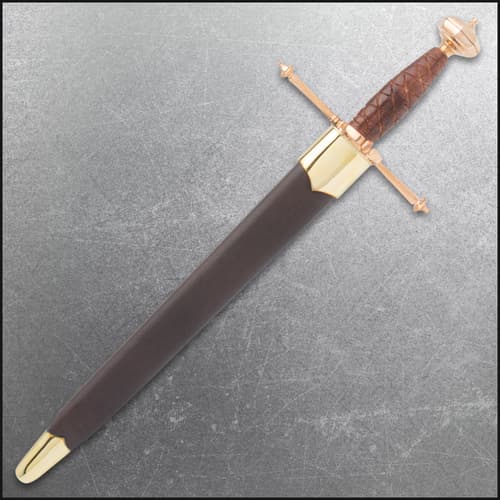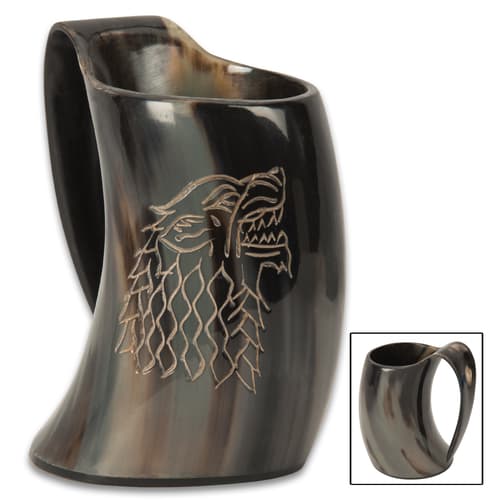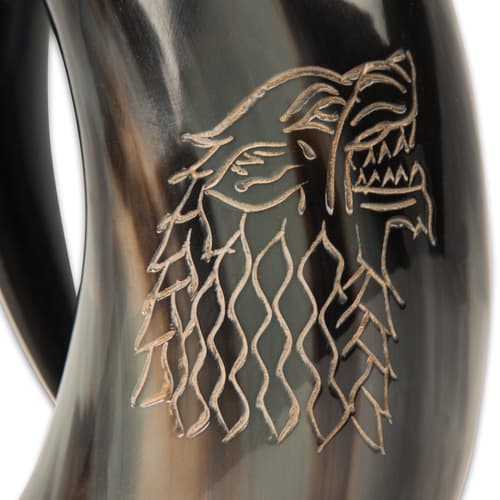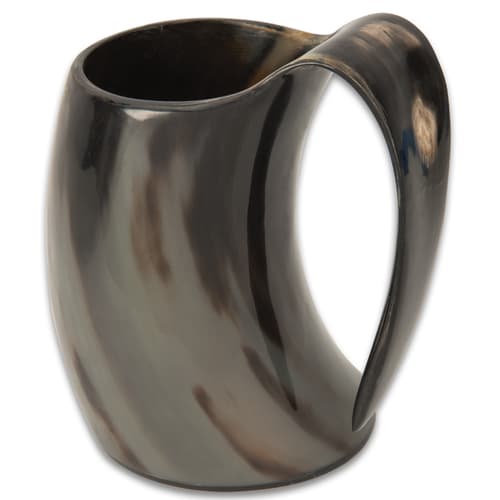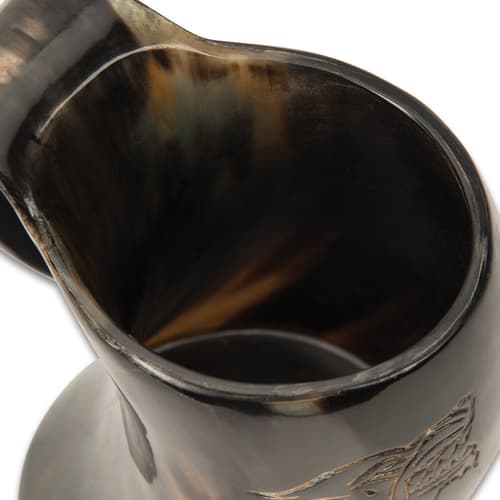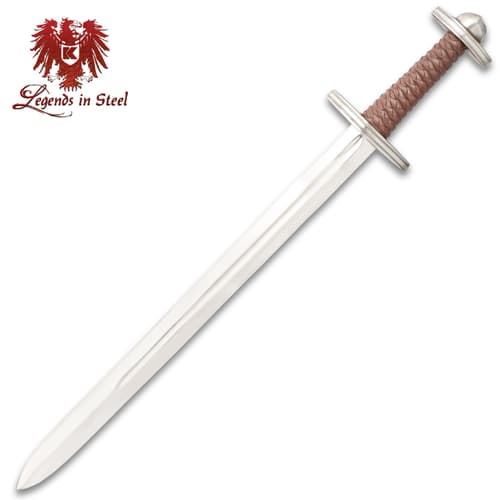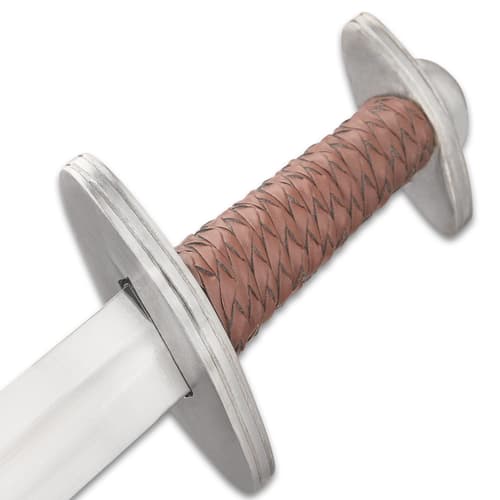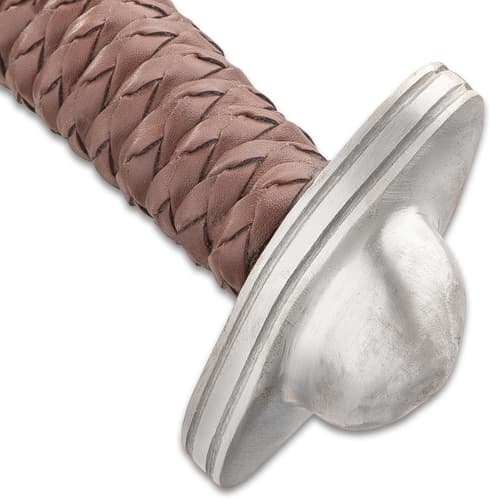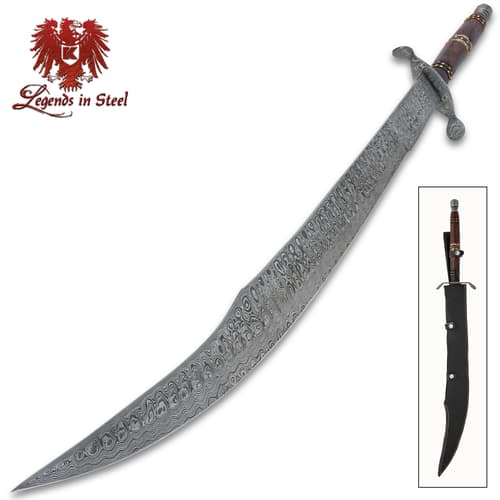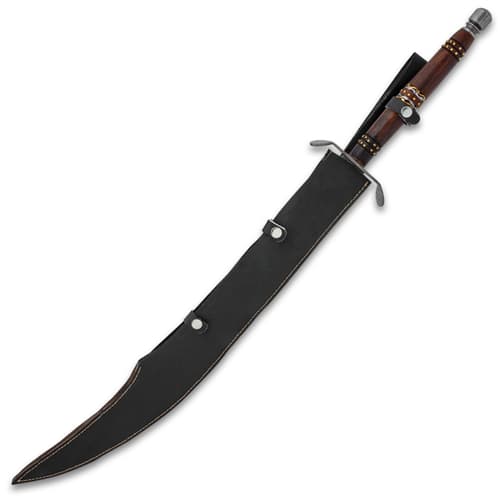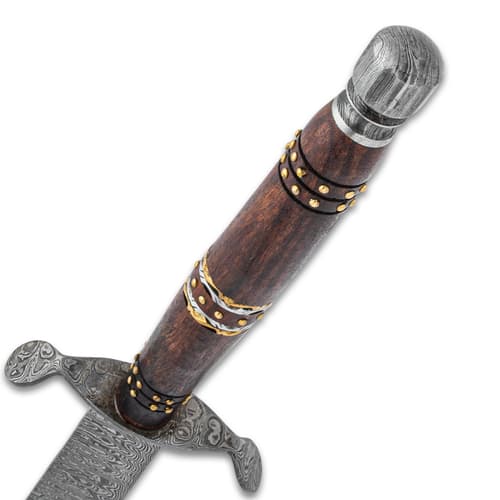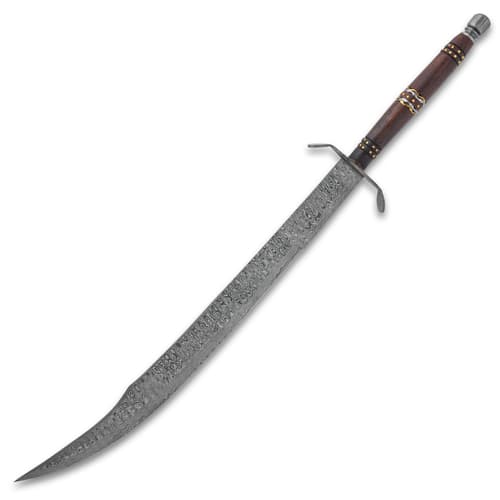Historical Swords
133 Results
27532
Imperial Knight Fantasy Scimitar Sword
USD
121
BUDK
Swords
Historical Swords
Scimitar Swords
CL2
Category L2
39.99
43221
Arabian Heartwood Scimitar Sword With Sheath - Stainless Steel Construction, Heartwood Handle Accents - Length 25”
USD
122
BUDK
Swords
Historical Swords
Scimitar Swords
CL2
Category L2
33.99
5994
1860 US Navy Cutlass Sword with Leather-Wrapped Cast Metal Sheath
USD
123
BUDK
Swords
Historical Swords
CL2
Category L2
59.99
32556
Legends In Steel Brass, Heartwood And Damascus Steel Sword
USD
124
Legends in Steel
Swords
Historical Swords
Medieval Swords
CL2
Category L2
106.99
$44.98
Price reduced from
$66.99
to
50994
Honshu Historic Forge Type N Viking Sword
USD
126
Honshu
Brands
Honshu - Knives, Swords & Axes
CL2
Category L2
269.99
6067
Full Size Celtic Dress Sword & Scabbard
USD
127
BUDK
Swords
Historical Swords
Gladius Swords
CL2
Category L2
41.99
46330
Royal Ranger Damascus Sword And Sheath - Damascus Steel Blade, Wooden Handle, Metal Guard And Pommel - Length 28”
USD
128
Legends in Steel
Swords
Historical Swords
Medieval Swords
CL2
Category L2
136.99
50982
Honshu Historic Forge Italian Dagger - 12" Carbon Steel Blade, Wooden Handle, Leather Sheath
USD
129
Honshu
Swords
Historical Swords
Medieval Swords
CL2
Category L2
199.99
$29.99
$50.98
Price reduced from
$69.99
to
50416
Legends In Steel Holy Land Sword And Scabbard - Damascus Steel Blade, Wooden Handle, Cast Metal Pommel And Handguard
USD
132
Legends in Steel
Swords
Historical Swords
CL2
Category L2
149.99
HISTORICAL SWORDS FAQS
- Are the historical swords functional or decorative?
Many of our historical swords are fully functional, crafted for cutting practice, reenactments, or martial arts. We also offer swords that are primarily decorative, intended for display purposes. Check the product descriptions for specific details about functionality. - What materials are used in the construction of historical swords?
Our historical swords are crafted from high-quality materials such as high carbon steel, stainless steel, and premium alloys for the blades. Handles may be made from wood, leather, metal, or other durable materials, ensuring both authenticity and durability. - How do I care for and maintain my historical sword?
To maintain your historical sword, regularly clean the blade with a soft cloth to remove fingerprints and moisture. Apply a light coat of oil to the blade to prevent rust. Store the sword in a dry place, away from direct sunlight and humidity, to preserve its condition. - Are these swords historically accurate?
Many of our historical swords are designed to closely replicate the original weapons from specific historical periods. They capture the authentic design, balance, and details that made these swords iconic in their time. - What type of sword did the Crusaders carry?
Crusaders commonly carried swords that have become known as “cruciform” swords because they bear the shape of the cross, which may have been a symbolic nod to the objective of liberating the holy land. More specifically, a type of terminology applied to crusader swords is called “Oakeshott” terminology; many crusader swords were Oakeshott types X, XI, and XII swords, all of which had a square crossguard that made the weapon look like a cross. - What swords and weapons did Vikings carry?
The Norsemen carried and used many different types of weapons, some of them swords, but many of them utilitarian, like axes. Swords carried by the Norsemen were commonly referred to as Carolingian or Viking swords and were typified by a short hilt with a small crossguard and pommels that had either three or five rounded lobes. A common pattern of knife or short sword from Northern Europe is called a Seax sword (also known as a sax), which had a straight edge and a spine that sloped down to meet it. Their utilitarian design indicates that they may have been used as tools as frequently as they were employed as weapons.

